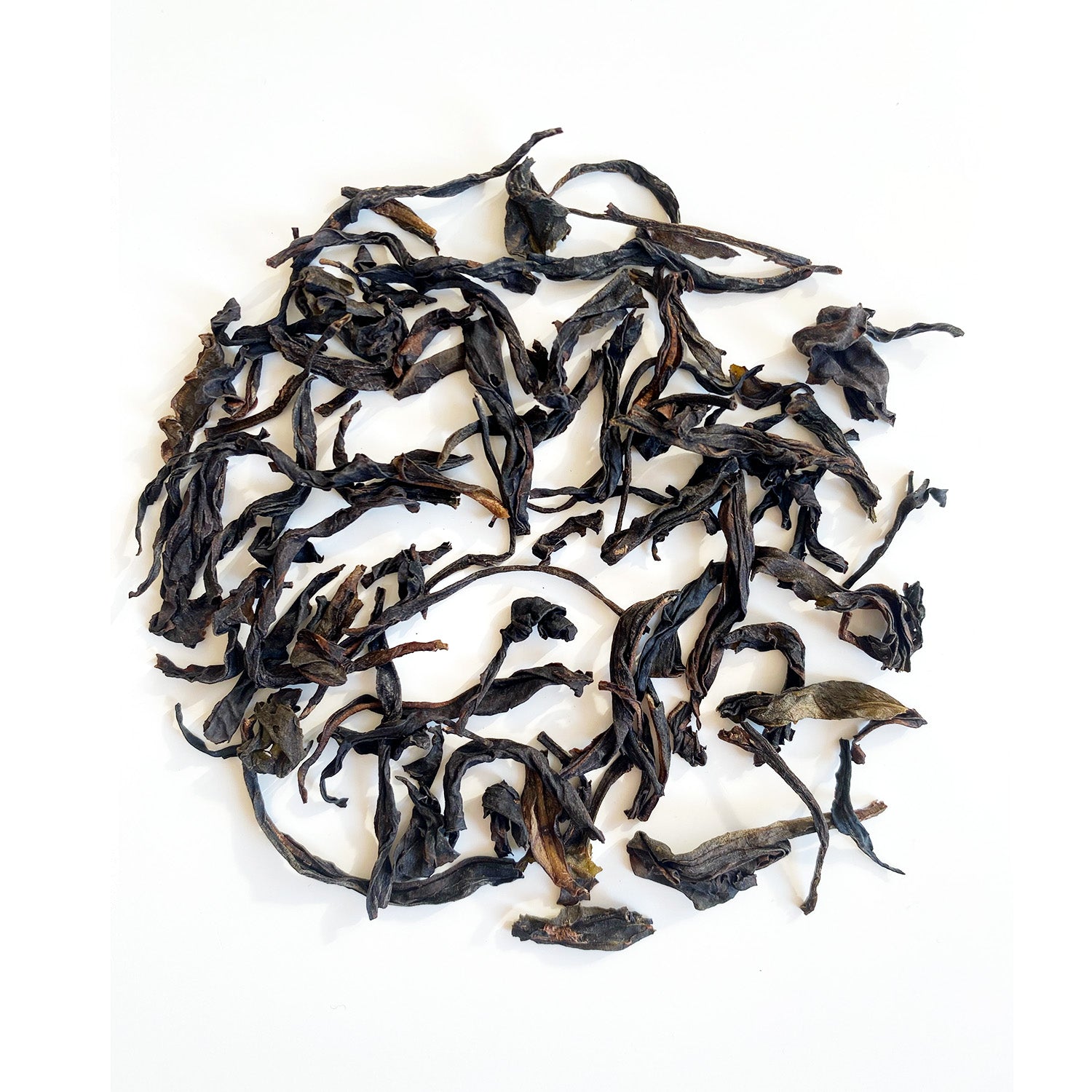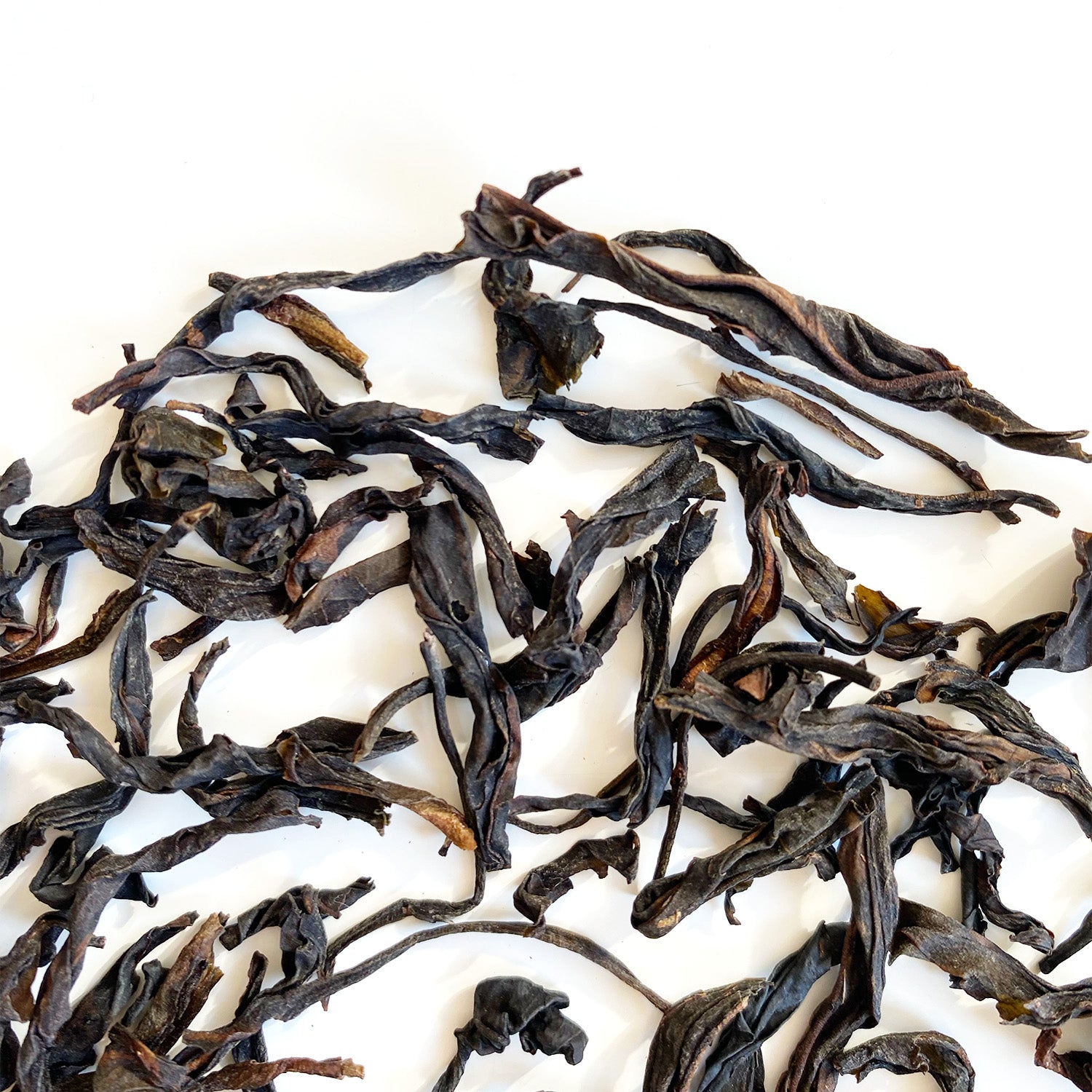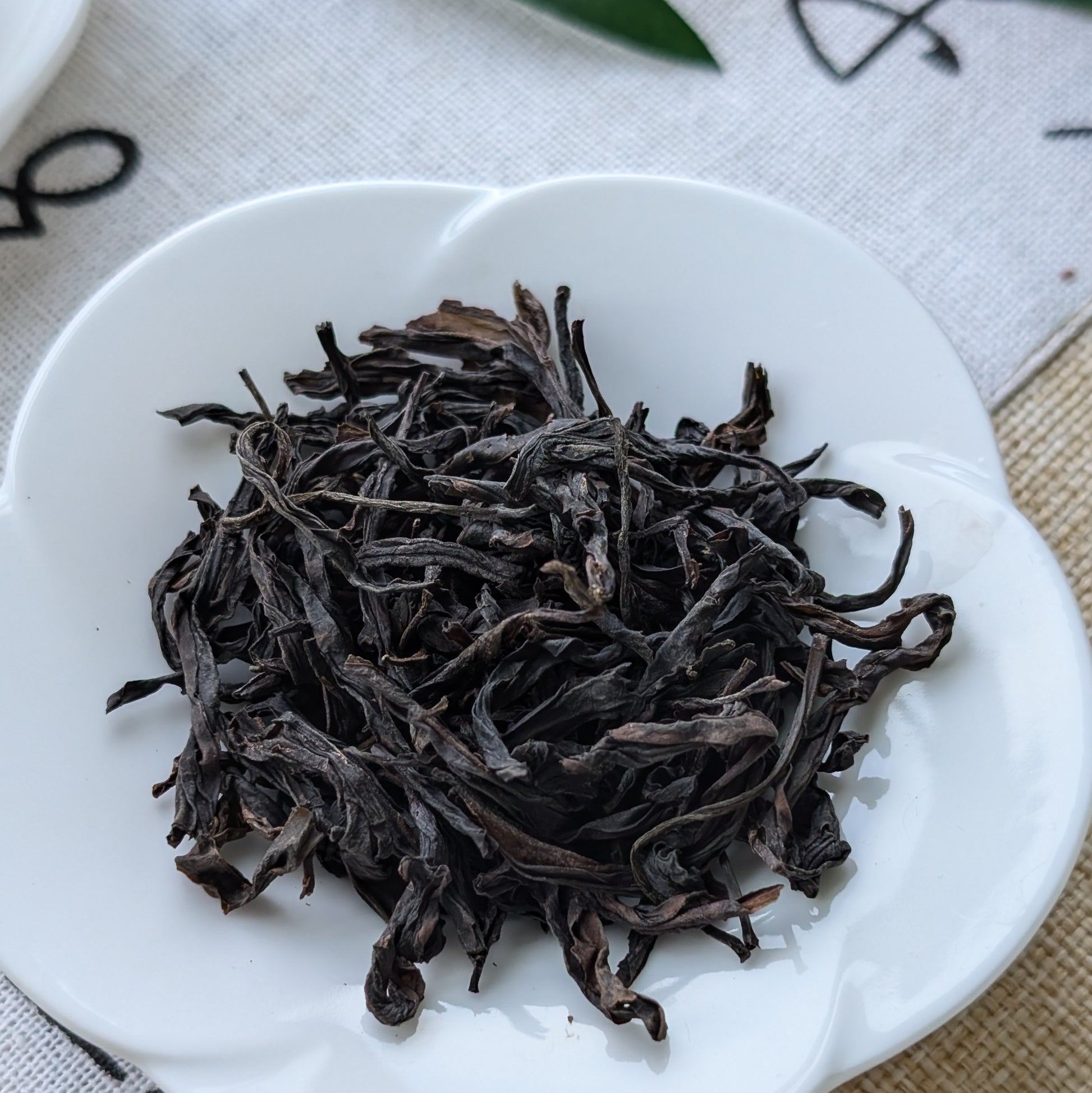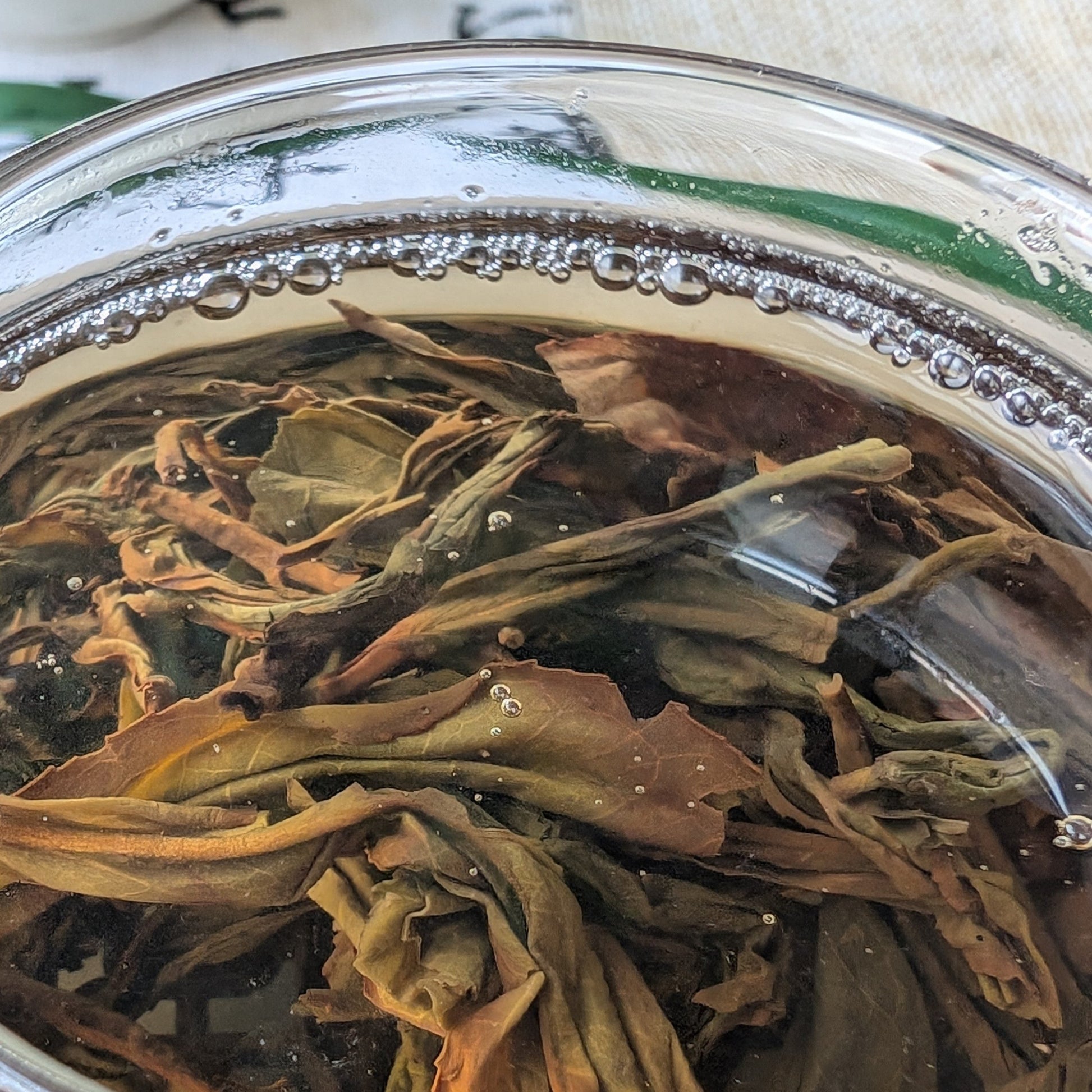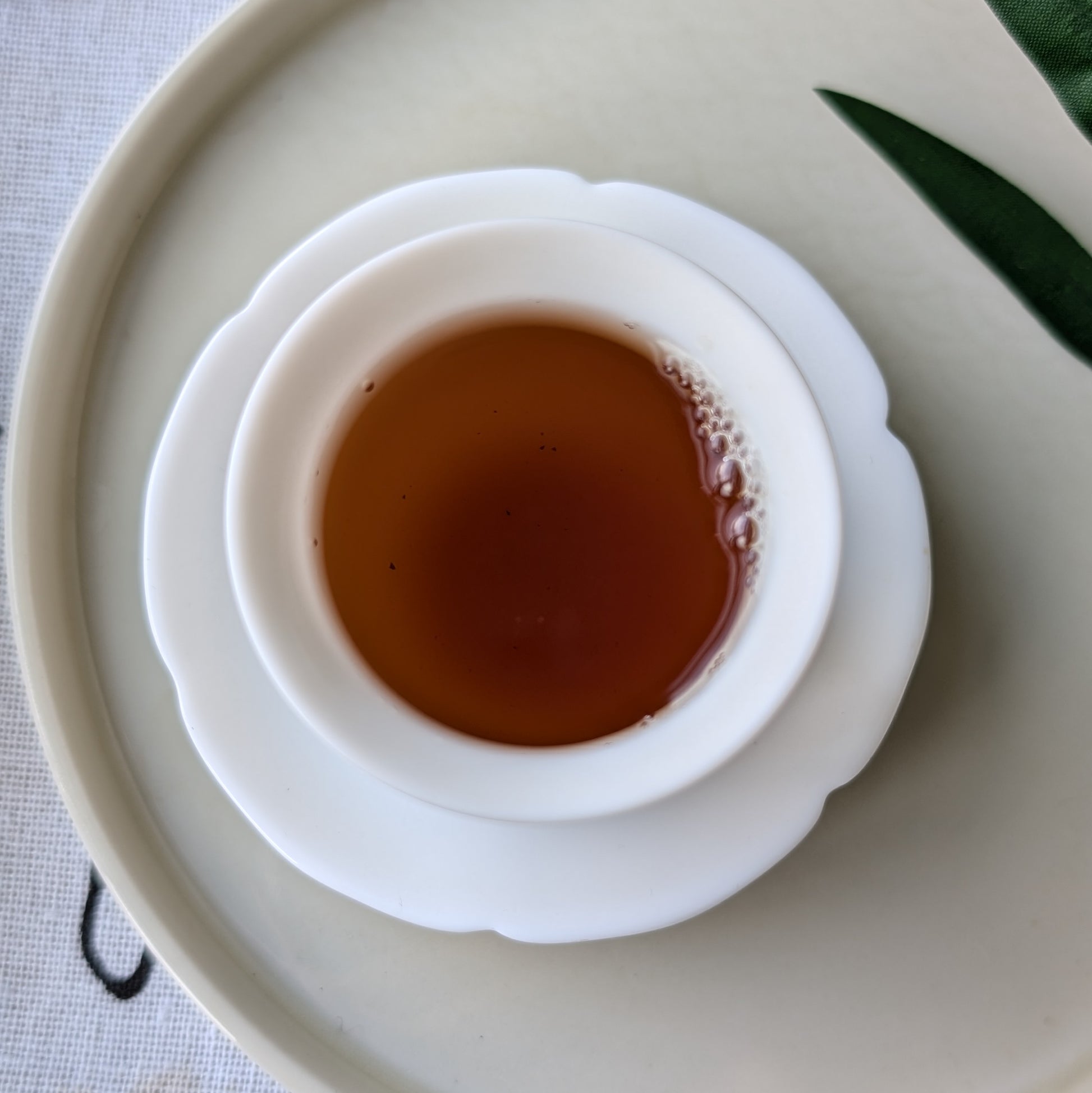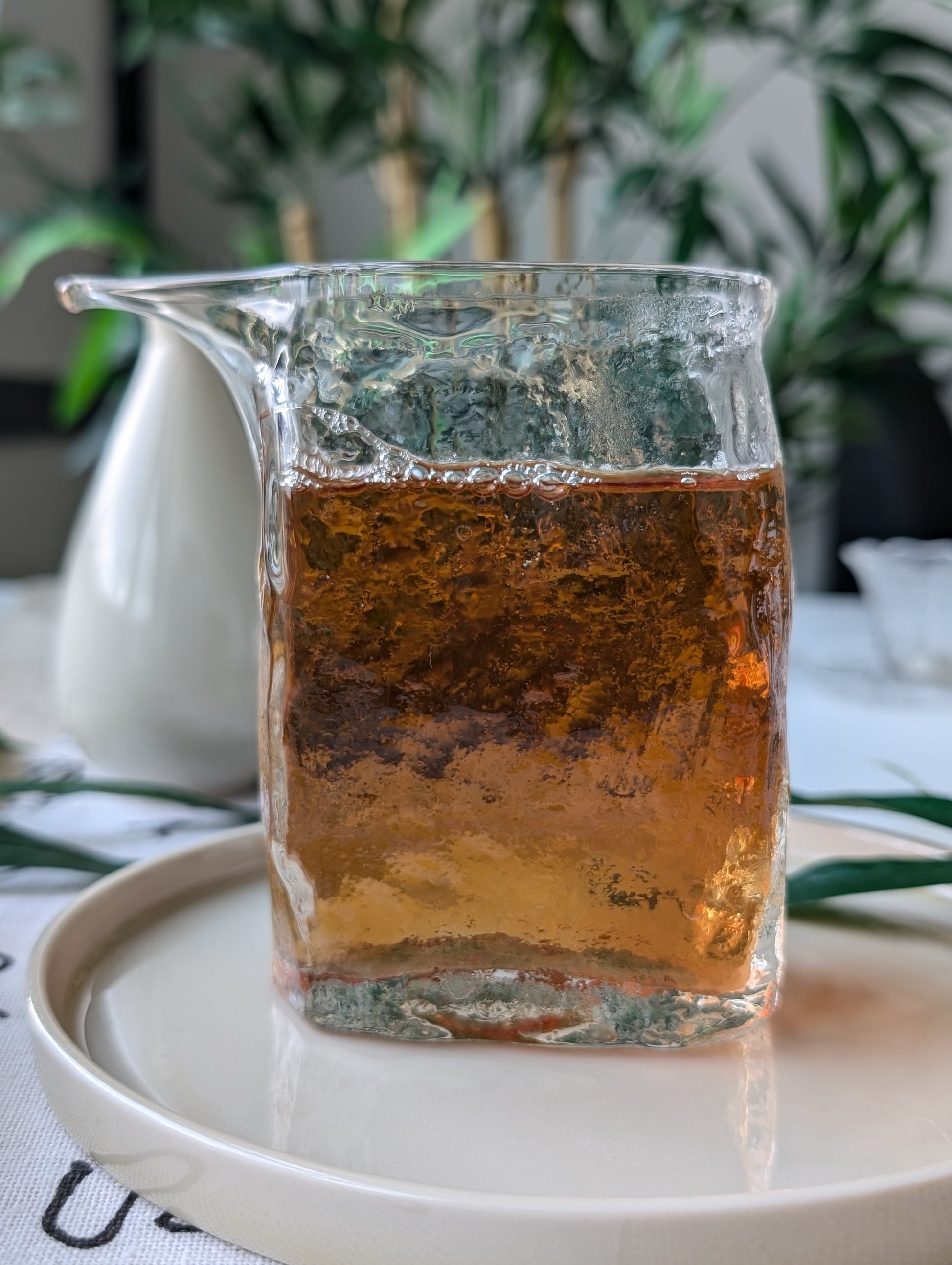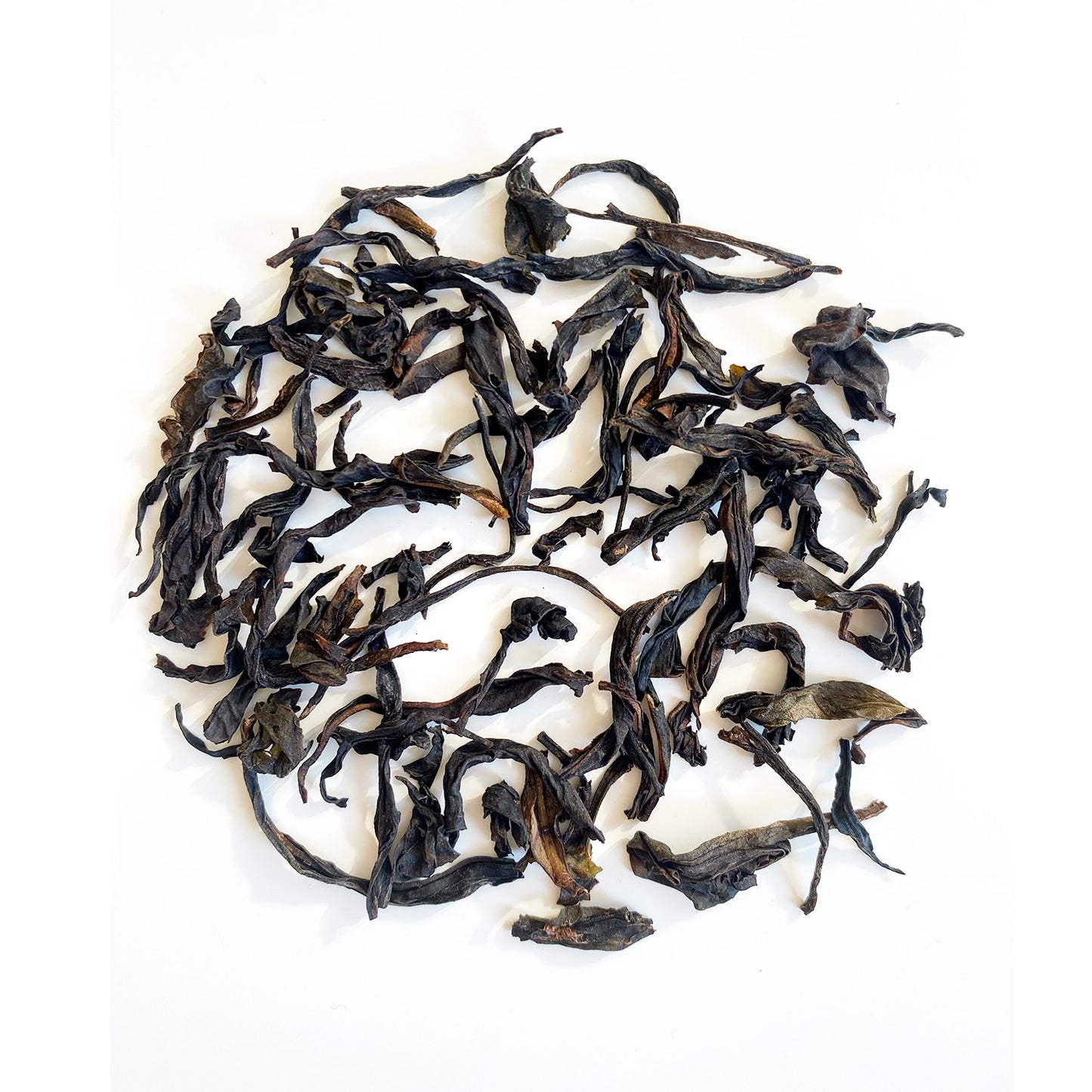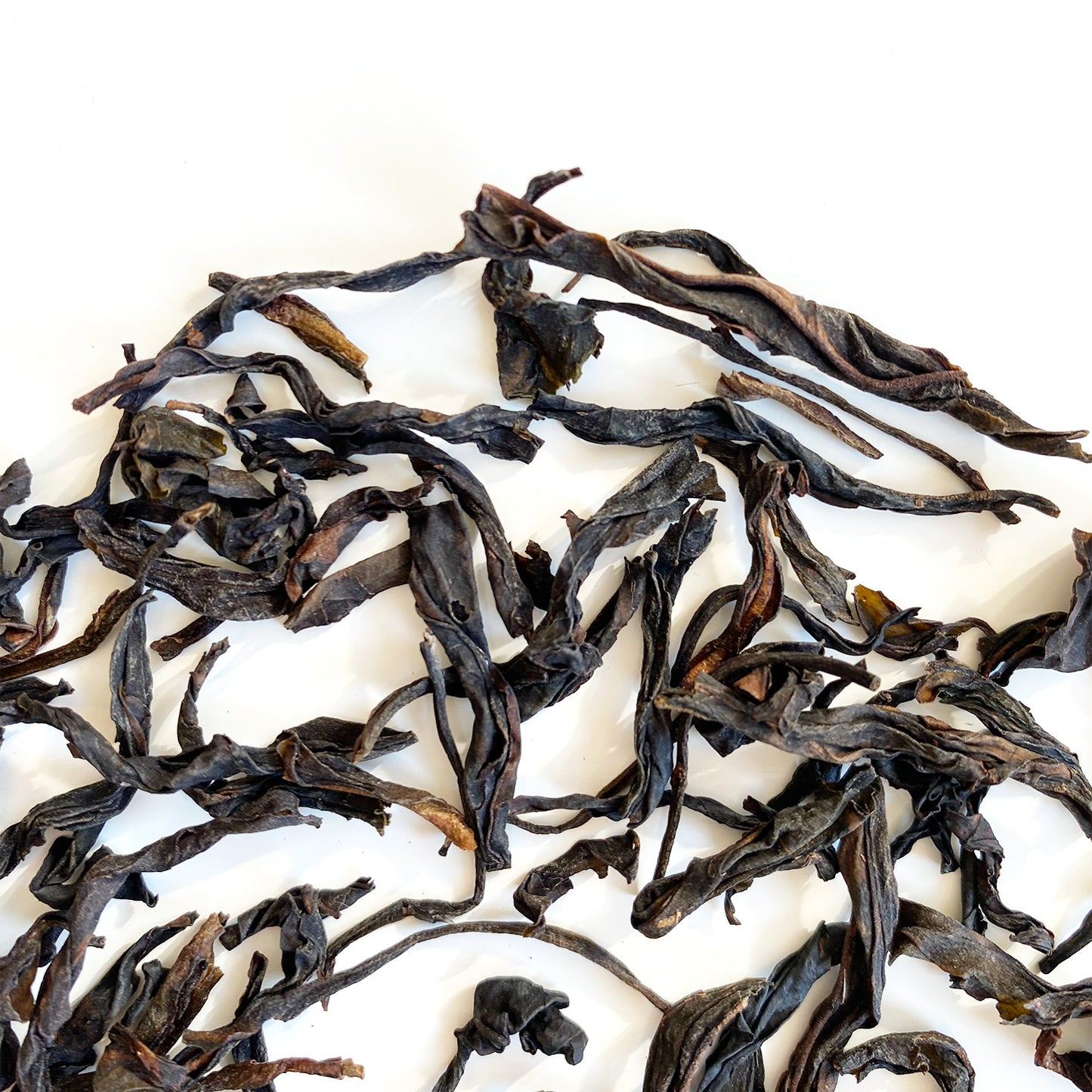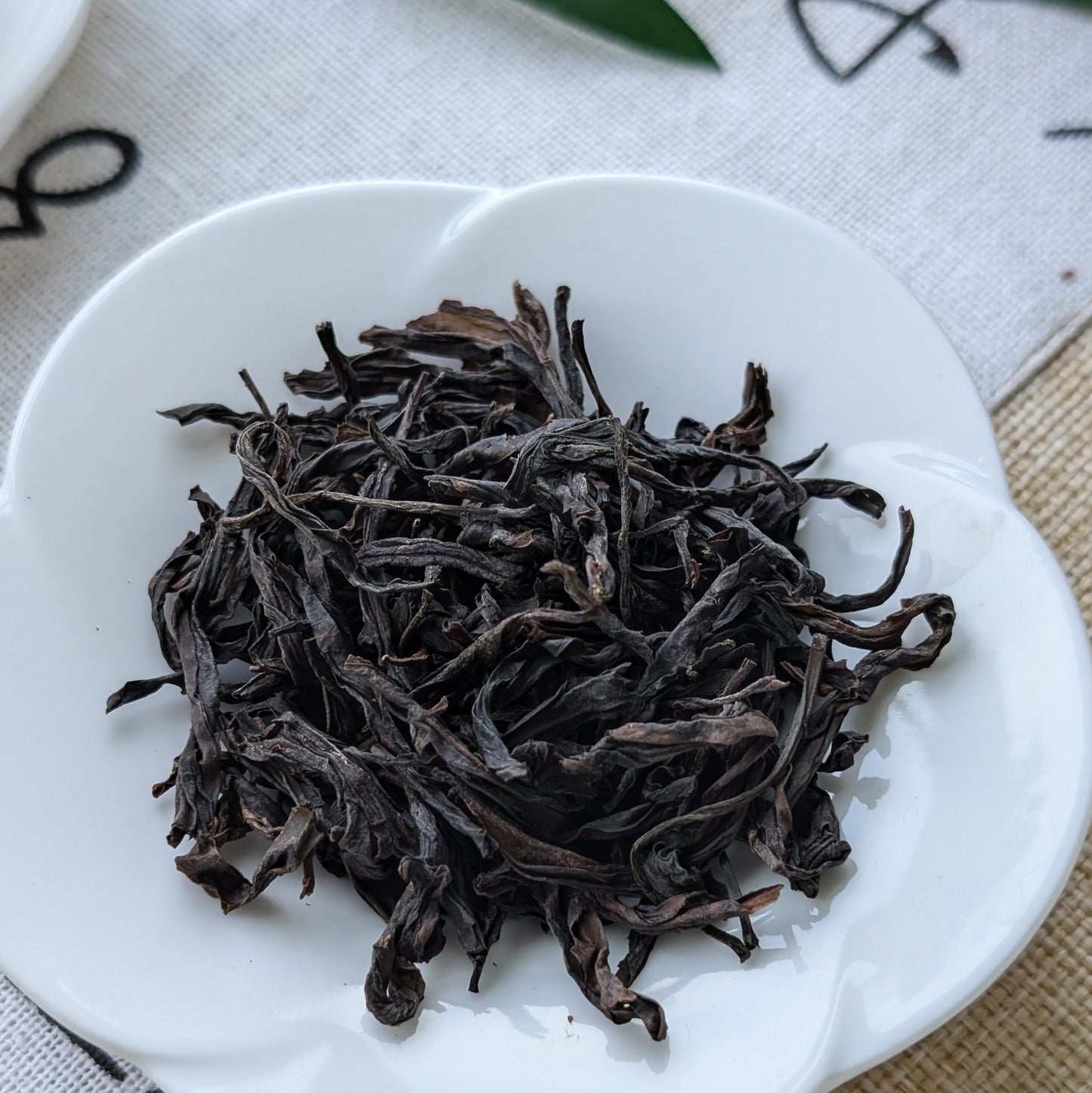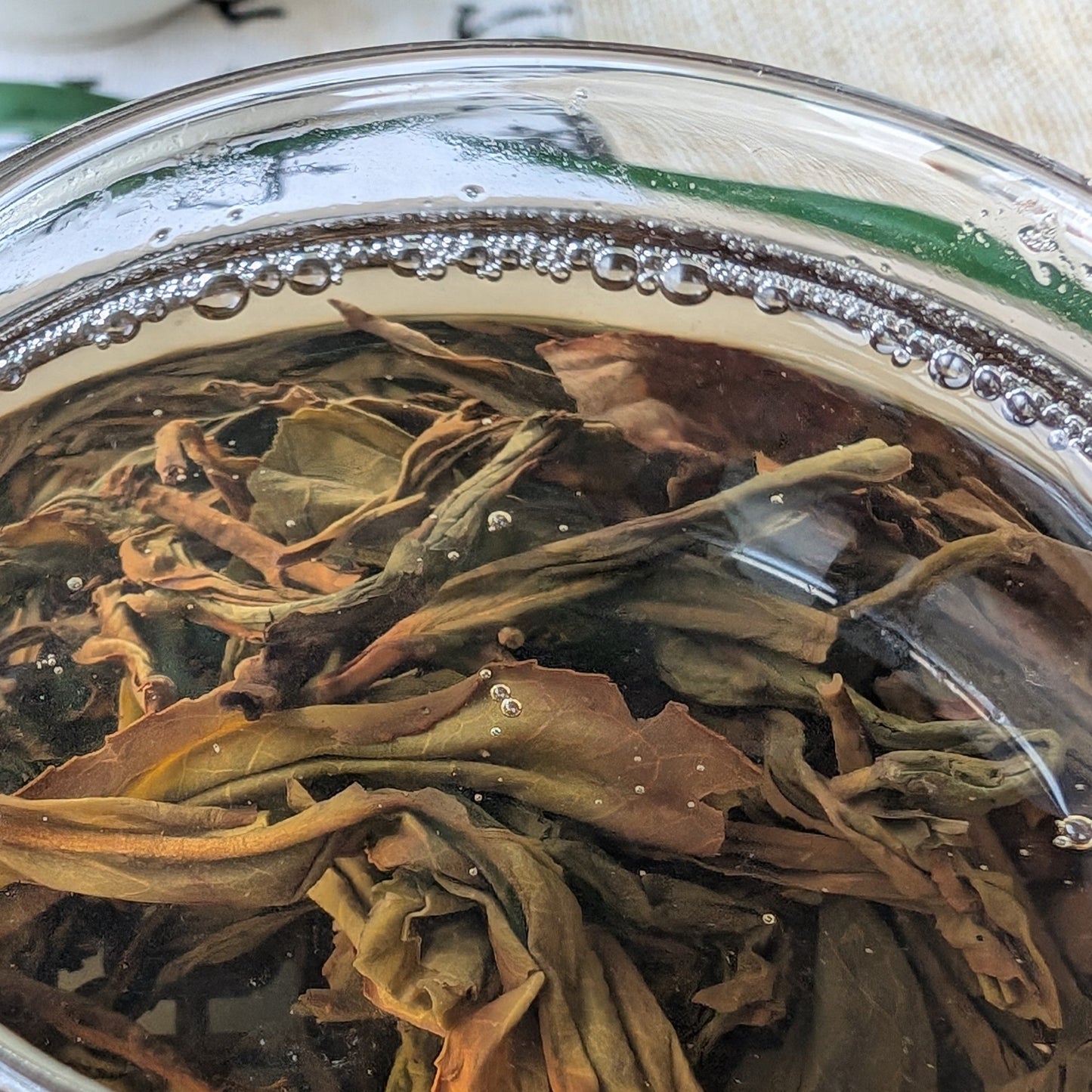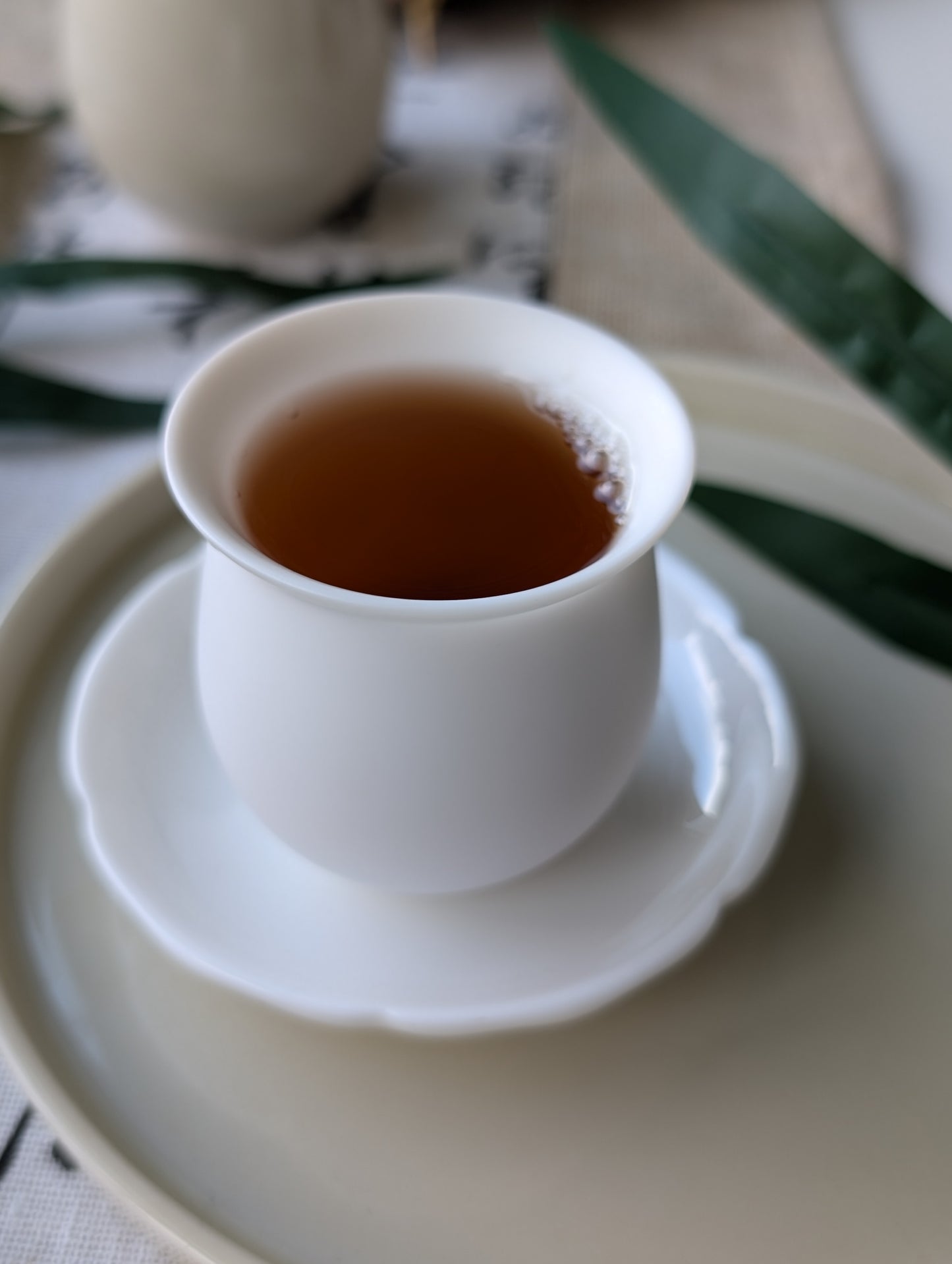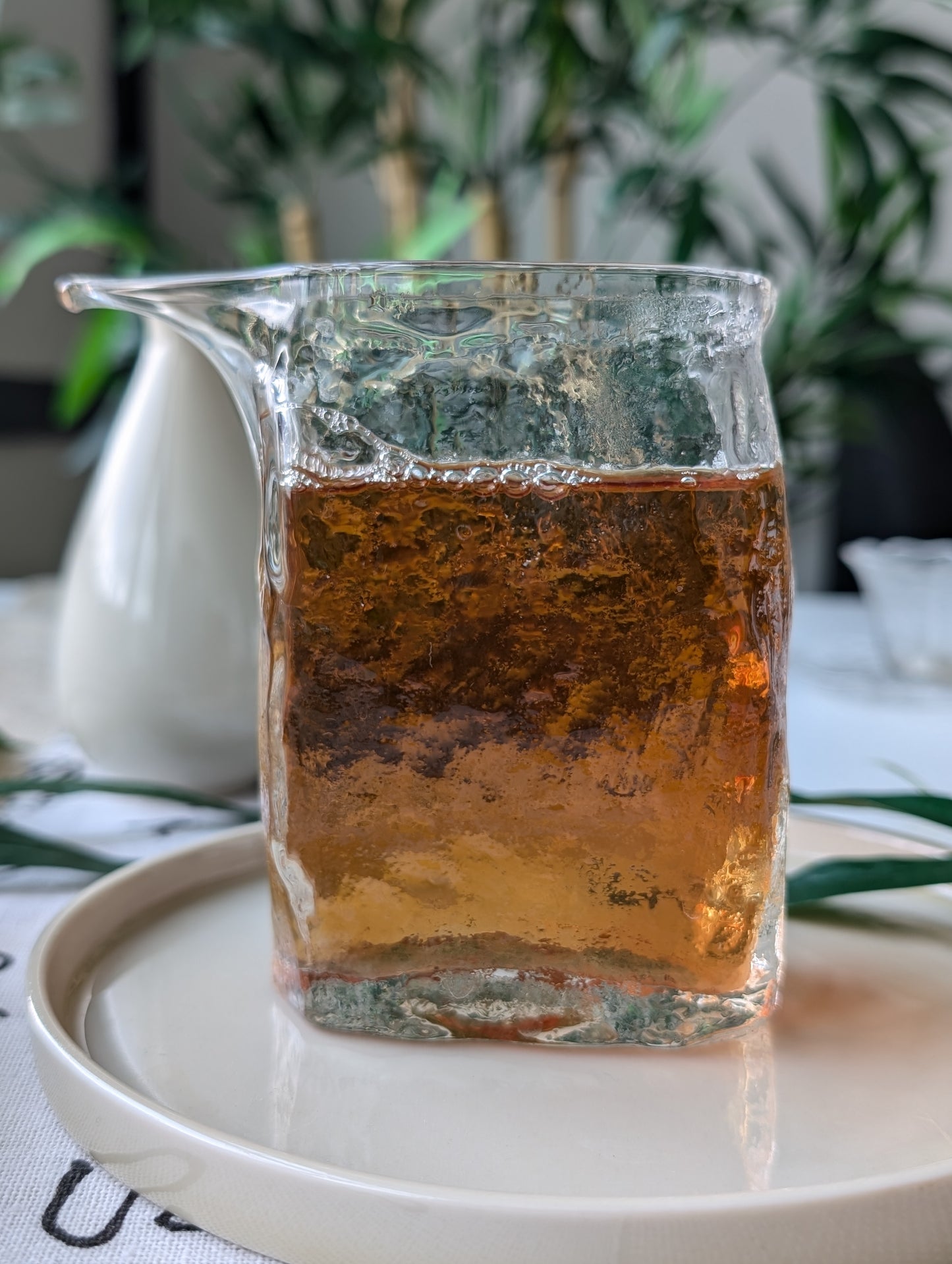Xing Ren Xiang Dan Cong Oolong Tea
Xing Ren Xiang Dan Cong Oolong Tea
Couldn't load pickup availability
Xing Ren Xiang Dan Cong Oolong tea, also known as Almond Aroma Dan Cong Tea, is a type of oolong tea that is grown in the Phoenix Mountain area of Guangdong, China.
Our Xing Ren Xiang is a special kind of Dan Cong tea, consisting of curly, brown coloured dry leaves. You won't find its unique almond fragrance in any other kind of tea.
This tea is known for its nutty, sweet, and floral flavor, with a distinct almond note. It has a smooth and mellow taste with a long-lasting aftertaste. The tea is considered one of the top grades of Dan Cong oolong teas, and its quality is determined by the number of leaves and buds in each infusion and the strength and complexity of its flavor.
Origin
Origin
- Brand: Teasenz
- Year: 2024
- Season: Spring
- Origin: Phoenix Mountain, Guangdong
- Type: oolong tea
How to Steep
How to Steep
Western method
Infuse 3 grams of Duck Shit oolong tea with 500 ml water at a temperature of 100ºC and steep for 40 seconds. For a second steep increase the steeping time to 1 minute.
Traditional method
Infuse 5 grams of Ya Shi Xiang tea with 100ml water at 100ºC and steep for 10 seconds. Also apply a 10 second steeping time for the 2nd and 3rd steep. Increase the steeping time by 5 seconds for every next steep.
Shipping, Returns & Payment Methods
Shipping, Returns & Payment Methods
Delivery time: 1-10 day EU delivery. For estimates per country, please visit the shipping info page at the bottom of our website.
Import taxes?: because we ship from our EU warehouse, you will NOT be charged import taxes upon delivery if you're based in the EU. All taxes are already included in our prices.
Free shipping: available for orders over €59 for The Netherlands/Belgium, €80 for other EU countries (excluding Portugal & Hungary) & UK, and over €100 for other countries.
Returns: orders can be returned for a refund within 30 days. Products should returned in unopened, unused condition.
Share
How this oolong tea is made
-
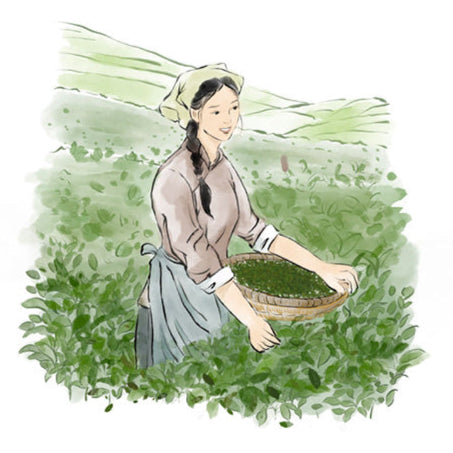
Picking
Tea leaves are hand-picked in the morning
-
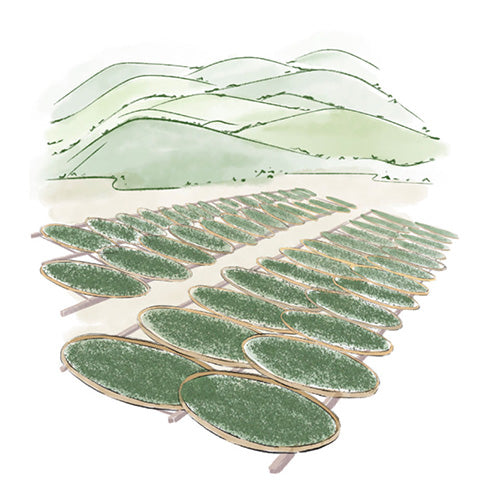
Withering
The leaves are spread on bamboo trays to wither.
-
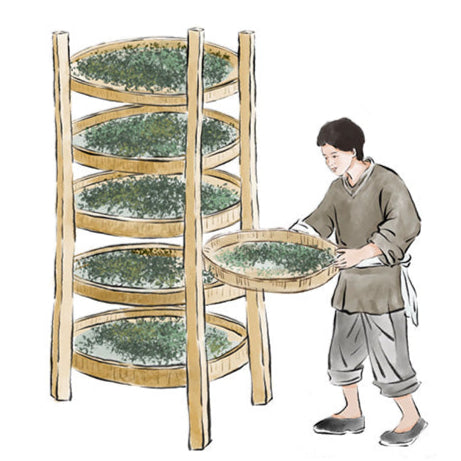
Partial Oxidation
The leaves are oxidized indoors.
-
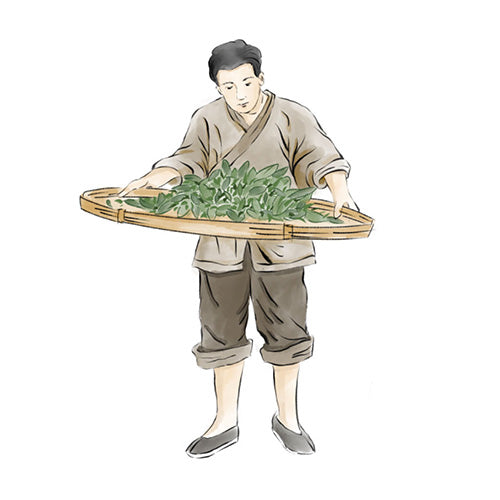
Bruising
To promote further oxidation, leaves are shaken on trays.
-
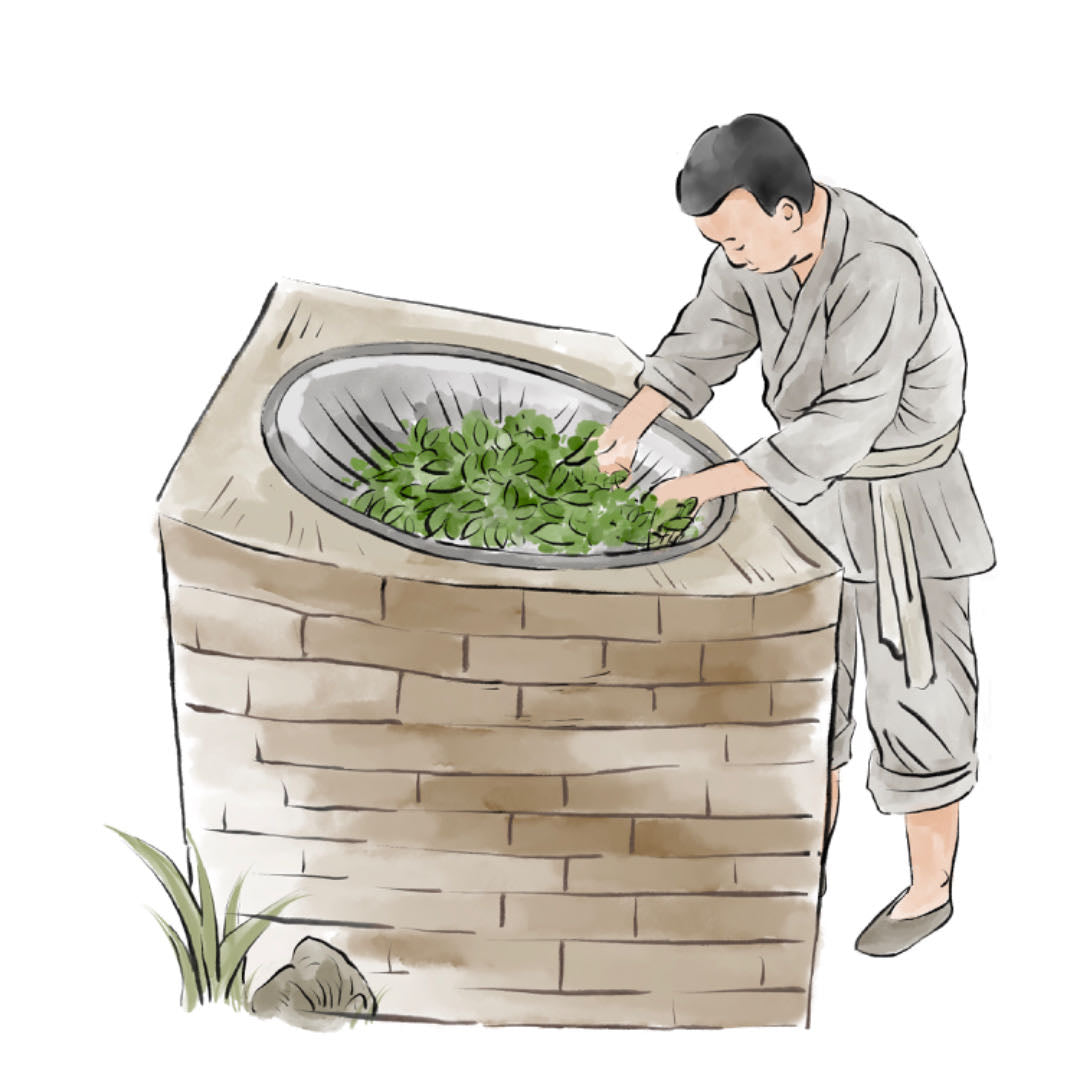
Fixation
The partially oxidized leaves are heated to halt oxidation.
-
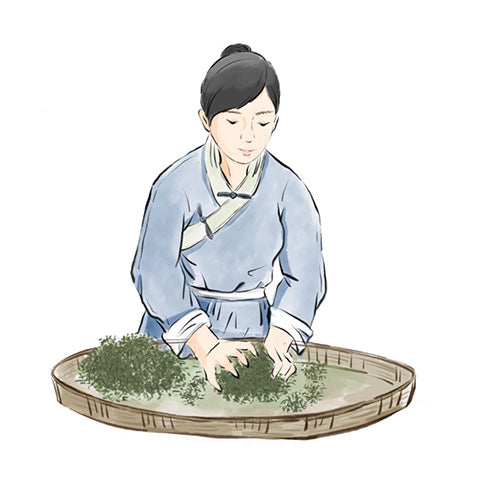
Rolling & Shaping
Tea leaves are rolled and shaped.
-
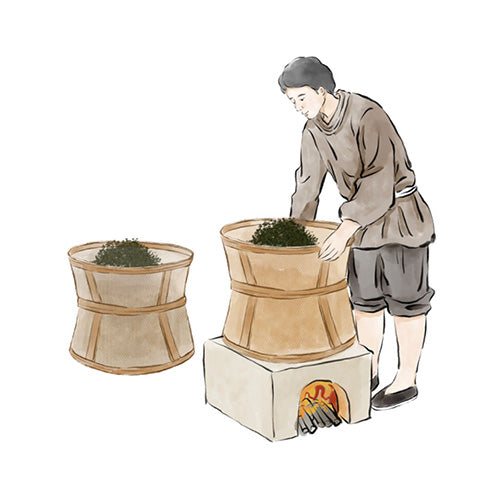
Drying
The leaves are dried to further reduce moisture.
-
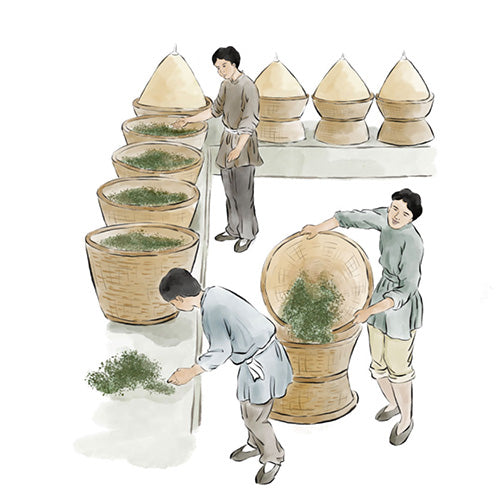
Roasting
Leaves are roasted in bamboo baskets to enhance aromas.
Lovely nutty taste
The tea was floral and bright with a slight nutty aroma and a looong aftertaste. Very nice to enjoy in a slow gong fu cha session. I brewed it up to 7 times but I think I could brew even more.
Brewing: 6g/100ml, 100°C, 10s x 3, +5s.
Warmed-up dry leaves smell like chocolate, spices and candied fruit. When the leaves are wet, honey and fruity notes appear.
The liquor tastes of spices, stone fruit, nuts and a hint of cocoa, giving an overall impression of a very rich, exotic symphony.
A high leaves-to-water ratio is beneficial here. This symphony needs to be played at full volume.
Good Dan Cong.
Fruity and nutty, reminds me of toasted pine nuts and dried tomatoe with slight note of italian herbs.
It is a little flat though.
Very good Dan Cong at this price point!
Smell: spices and nuts
Tasting notes: nutty, sweet and floral with spices
Brewing parameters: 5g/100ml. 95C 15s (keep first brew to taste last), then 100C 5s brews

Our design work is inspired by the artwork “Along the River During the Qingming Festival” by the Zhang Zeduan in the Song Dynasty. Instead of displaying the daily lives of people in the capital of China (as the original artwork), we display the tea making process of farmers through the same bird’s eye perspective.
When examining our packaging design in detail, tea enthusiasts will observe the tea making process, featuring tea farmers picking, drying, rolling, and frying tea leaves. The tea is then tasted in a pavilion and transported by horses along the ‘ancient tea road’.
Together, the traditional Chinese landscape and tea making theme, symbolise heritage, tradition, and respect for hard work of tea farmers.

